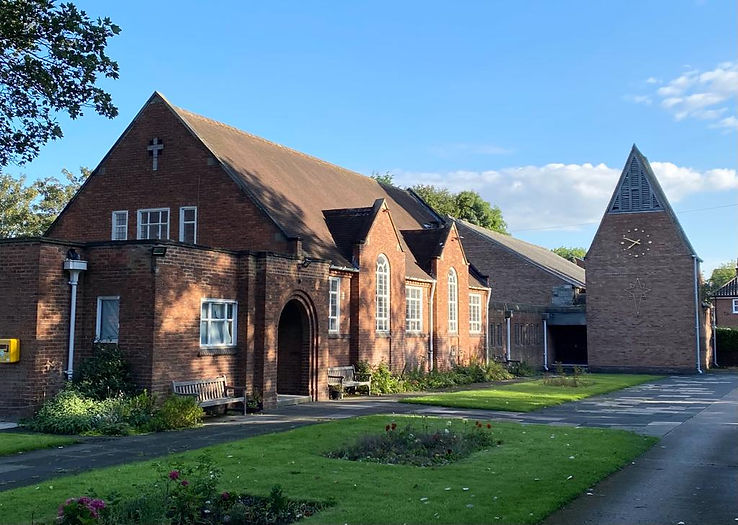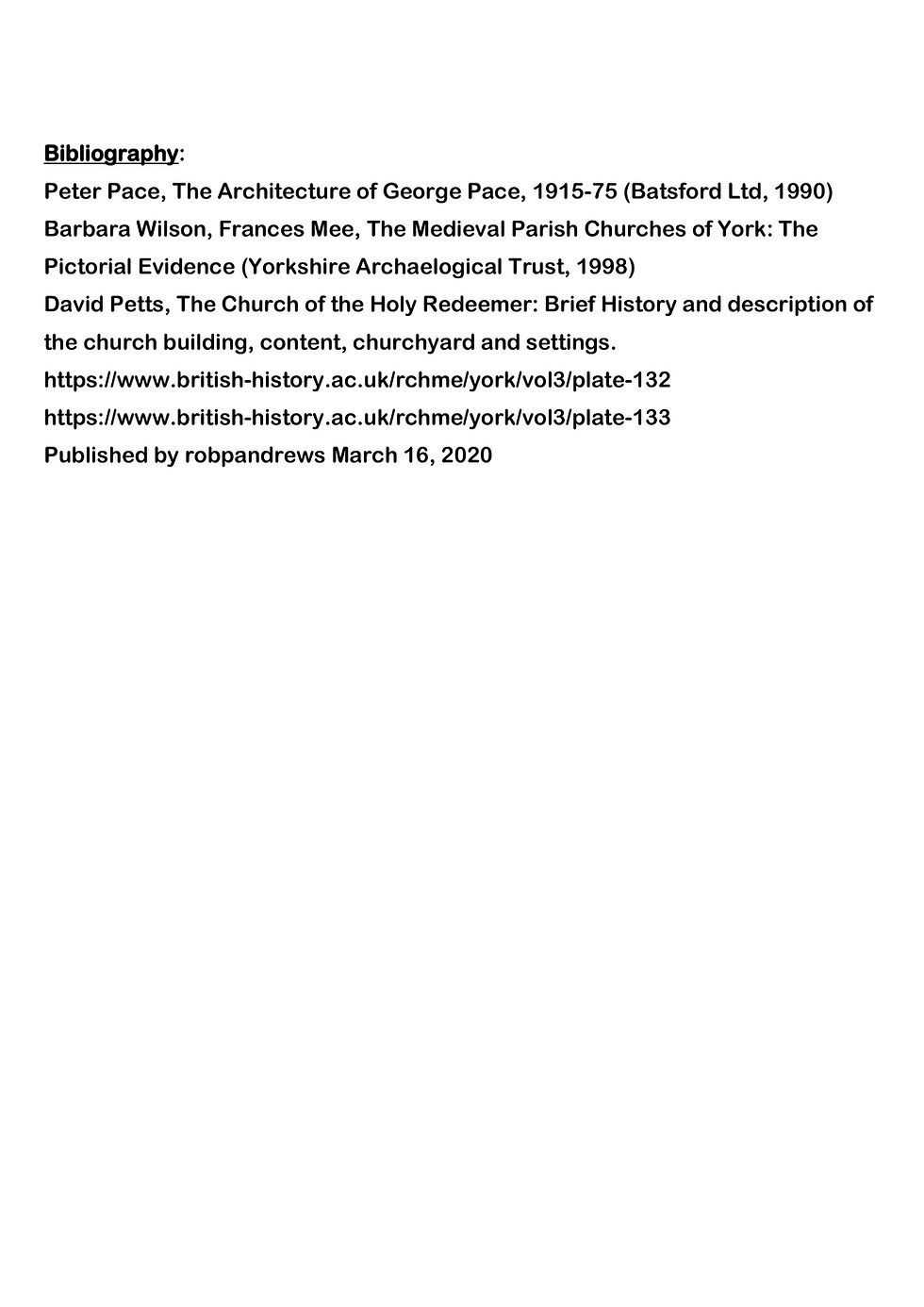
Church Building and Church History
Holy Redeemer was the first church in York to be built after the Second World War.
A Grade 2 listed building, it was designed by the celebrated church architect George Pace, who lived in York. The foundation stone was laid in November 1962 and the church was consecrated in December 1964 by the Rt Revd Lord Coggan, Archbishop of York.
The work of George Pace
Pace's work was noted for including elements of earlier buildings within new designs. In this case, he used parts of the medieval church of St. Mary Bishophill Senior which had been demolished in the early 1960s. It was knocked down because the historic centre of York had so many churches that their congregations could not support them.
When St. Mary's was demolished archaeologists were surprised to discover many fragments of Viking-age sculptures, including pieces of stone crosses and burial markers. The new church of Holy Redeemer used other Norman (12th century AD) porch from the old church, as well as large parts of the south aisle. Pace used many of the newly discovered Viking-age sculptures. Some of these stones were built into the walls at Holy Redeemer, others were placed in features such as the pulpit. The high cross behind the altar used a well-preserved fragment of a Viking cross slab. Stones from St. Mary's were also taken to the church of St. Clement's on Scarcroft Road. Although Holy Redeemer is one of York's most recent churches, these stones link back to the earliest centuries of Christianity in the city.
The bells are originally from Haxby parish church. They were both recast after being damaged by fire. They are rung by swinging the clappers. One of the most recognizable features of the church is the clock. This also dates from 1964. The dial was designed by George Pace and was regilded for the Silver Jubilee. Holy Redeemer also boasts an excellent selection of church furniture by 'Mousy' Thompson of Kilburn.
Fragments from the past
The most impressive Viking Sculpture in the church is the stone used as a cross that stands on the wall behind the altar. This was once the shaft of a stone cross and dates to the 10th Century AD.
Other decorations include interlacted animals, and typical Viking-age art. Many of the other stones built into the church walls are only fragments of what must have been larger monuments. They are decorated with different designs including knots and interlace. Most are probably from stone crosses, although none of the cross-heads themselves survive. It is likely that these monuments would have been created on behalf of the wealthy Viking lords and traders who lived in York during the 10th century. At this time the city was the centre of trade that extended northwards from Scandinavia to the Mediterranean and eastwards towards Central Asia.
Not all the carved stones are of Viking date. there are also a number of simple carved crosses that are burial markers of a later medieval date, perhaps of the 13th or 14th century; there is also a fragment of a carved pair of stone legs that might even be Roman.




.png)






